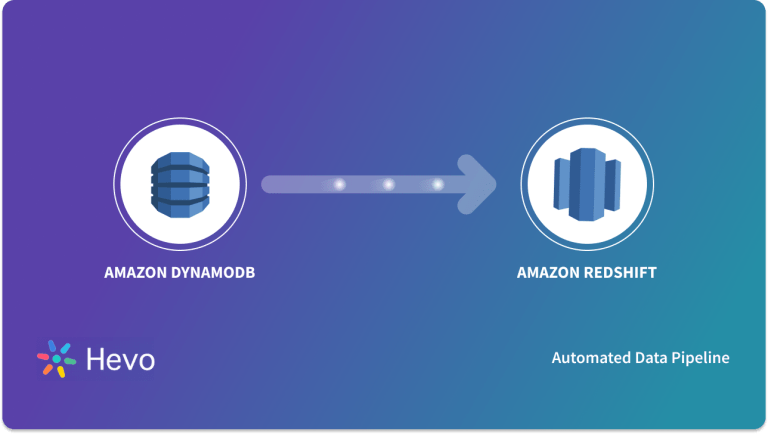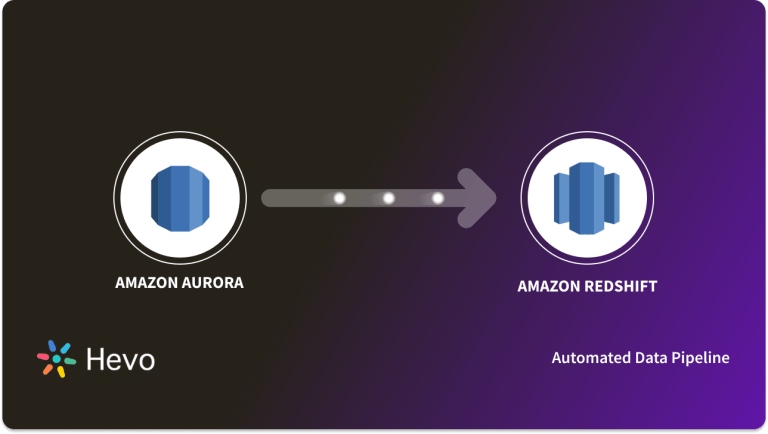Moving data from Amazon DynamoDB to S3 is one of the efficient ways to derive deeper insights from your data. If you are trying to move data into a larger database. Well, you have landed on the right article. Now, it has become easier to replicate data from DynamoDB to S3.
This article will give you a brief overview of Amazon DynamoDB and Amazon S3. You will also get to know how you can set up your DynamoDB to S3 integration using 4 easy steps. Moreover, the limitations of the method will also be discussed. Read along to know more about connecting DynamoDB to S3 in the further sections.
Table of Contents
Prerequisites
You will have a much easier time understanding the ways for setting up the DynamoDB to S3 integration if you have gone through the following aspects:
- An active AWS account.
- Working knowledge of the ETL process.
What is Amazon DynamoDB?
Amazon DynamoDB is a document and key-value Database with a millisecond response time. It is a fully managed, multi-active, multi-region, persistent Database for internet-scale applications with built-in security, in-memory cache, backup, and restore. It can handle up to 10 trillion requests per day and 20 million requests per second.
Some of the top companies like Airbnb, Toyota, Samsung, Lyft, and Capital One rely on DynamoDB’s performance and scalability.
Effortlessly transition your data from DynamoDB to S3 using Hevo’s no-code platform. With automated data pipelines, Hevo simplifies the migration process, ensuring that your data is transferred quickly and accurately. Say goodbye to complex coding and hello to seamless integration for your data management needs!
Hevo’s salient features include:
- Highly Scalable and fault-tolerant architecture.
- Transparent pricing with various tiers to choose from to meet your varied needs.
- Real-time data integration ensures that your data is always analysis-ready.
- Exceptional customer support and extensive documentation to help you if you are stuck somewhere.
Thousands of customers trust Hevo for their ETL process. Join them and experience seamless data migration.
Get Started with Hevo for FreeWhat is Amazon S3?
Amazon S3 is a fully managed object storage service used for a variety of purposes like data hosting, backup and archiving, data warehousing, and much more. Through an easy-to-use control panel interface, it provides comprehensive access controls to suit any kind of organizational and commercial compliance requirements.
S3 provides high availability by distributing data across multiple servers. This strategy, of course, comes with a propagation delay, however, S3 only guarantees eventual consistency. Also, in the case of Amazon S3, the API will always return either new or old data and will never provide a damaged answer.
What is AWS Data Pipeline?
AWS Data Pipeline is a Data Integration solution provided by Amazon. With AWS Data Pipeline, you just need to define your source and destination and AWS Data Pipeline takes care of your data movement. This will avoid your development and maintenance efforts. With the help of a Data Pipeline, you can apply pre-condition/post-condition checks, set up an alarm, schedule the pipeline, etc. This article will only focus on data transfer through the AWS Data Pipeline alone.
Limitations: Per account, you can have a maximum of 100 pipelines and objects per pipeline.
Steps to Connect DynamoDB to S3 using AWS Data Pipeline
You can follow the below-mentioned steps to connect DynamoDB to S3 using AWS Data Pipeline:
Step 1: Create an AWS Data Pipeline from the built-in template provided by Data Pipeline for data export from DynamoDB to S3 as shown in the below image.
Step 2: Activate the Pipeline once done.
Step 3: Once the Pipeline is finished, check whether the file is generated in the S3 bucket.
Step 4: Go and download the file to see the content.
Step 5: Check the content of the generated file.
With this, you have successfully set up DynamoDB to S3 Integration.
Advantages of exporting DynamoDB to S3 using AWS Data Pipeline
AWS provides an automatic template for Dynamodb to S3 data export and very less setup is needed in the pipeline.
- It internally takes care of your resources i.e. EC2 instances and EMR cluster provisioning once the pipeline is activated.
- It provides greater resource flexibility as you can choose your instance type, EMR cluster engine, etc.
- This is quite handy in cases where you want to hold your baseline data or take a backup of DynamoDB table data to S3 before further testing on the DynamoDB table and can revert to the table once done with testing.
- Alarms and notifications can be handled beautifully using this approach.
Disadvantages of exporting DynamoDB to S3 using AWS Data Pipeline
- The approach is a bit old-fashioned as it utilizes EC2 instances and triggers the EMR cluster to perform the export activity. If the instance and the cluster configuration are not properly provided in the pipeline, it could cost dearly.
- Sometimes EC2 instance or EMR cluster fails due to resource unavailability etc. This could lead to the pipeline getting failed.
Method 2: Steps to Connect DynamoDB to S3 using AWS Data Pipeline
Even though the solutions provided by AWS work, they are not very flexible and resource optimized. These solutions either require additional AWS services and cannot be used to copy data from multiple tables across multiple regions easily. You can use Hevo, an automated Data Pipeline platform for Data Integration and Replication without writing a single line of code. Using Hevo, you can streamline your ETL process with its pre-built native connectors with various Databases, Data Warehouses, SaaS applications, etc.
Step 1: Configure DynamoDB as your source.
To create a pipeline, click on the ‘Create Pipeline’ button, search for ‘DynamoDB,’ and select it. Then, fill in the required connection details to link your DynamoDB account, and click ‘Test & Continue’ to proceed.
Step 2: Configure S3 as your destination
Select ‘S3’ as your destination and fill in the required connection details, including Access Key ID, Secret Access Key, Bucket Name, and Bucket Region. Finally, click on ‘Save & Continue’ to proceed.
Step 3: Final Step
Provide a suitable table prefix, and for the final step, click ‘Continue.’
That’s it! Within minutes, you will have created a pipeline to migrate your data from DynamoDB to S3!
You can also check out our blog on:
- how to move data from DynamoDB to Amazon S3 using AWS Glue.
- Dynamodb to Databricks
Conclusion
Overall, using the AWS Data Pipeline is a costly setup, and going with serverless would be a better option. However, if you want to use engines like Hive, Pig, etc., then Pipeline would be a better option to import data from the DynamoDB table to S3. Now, the manual approach of connecting DynamoDB to S3 using AWS Glue will add complex overheads in terms of time and resources. Such a solution will require skilled engineers and regular data updates.
Hevo Data provides an Automated No-code Data Pipeline that empowers you to overcome the above-mentioned limitations. Hevo caters to various data sources and can seamlessly transfer your DynamoDB data to Amazon S3. Hevo’s Data Pipeline enriches your data and manages the transfer process in a fully automated and secure manner without having to write any code. Sign up for a 14-day free trial and experience the feature-rich Hevo suite firsthand.
FAQs
How to backup DynamoDB table to S3?
Use AWS Data Pipeline or AWS Backup to create a backup of your DynamoDB table directly to an S3 bucket. You can also use the Export to S3 feature in the DynamoDB console.
How do I connect my AWS to my S3?
To connect AWS services to S3, ensure proper IAM permissions are set. Use SDKs or CLI to interact with S3 by specifying your bucket name and region in your AWS service configurations.
How to load data from DynamoDB to Snowflake?
You can use AWS Glue or a third-party ETL tool like Hevo Data to extract data from DynamoDB and load it into Snowflake.









